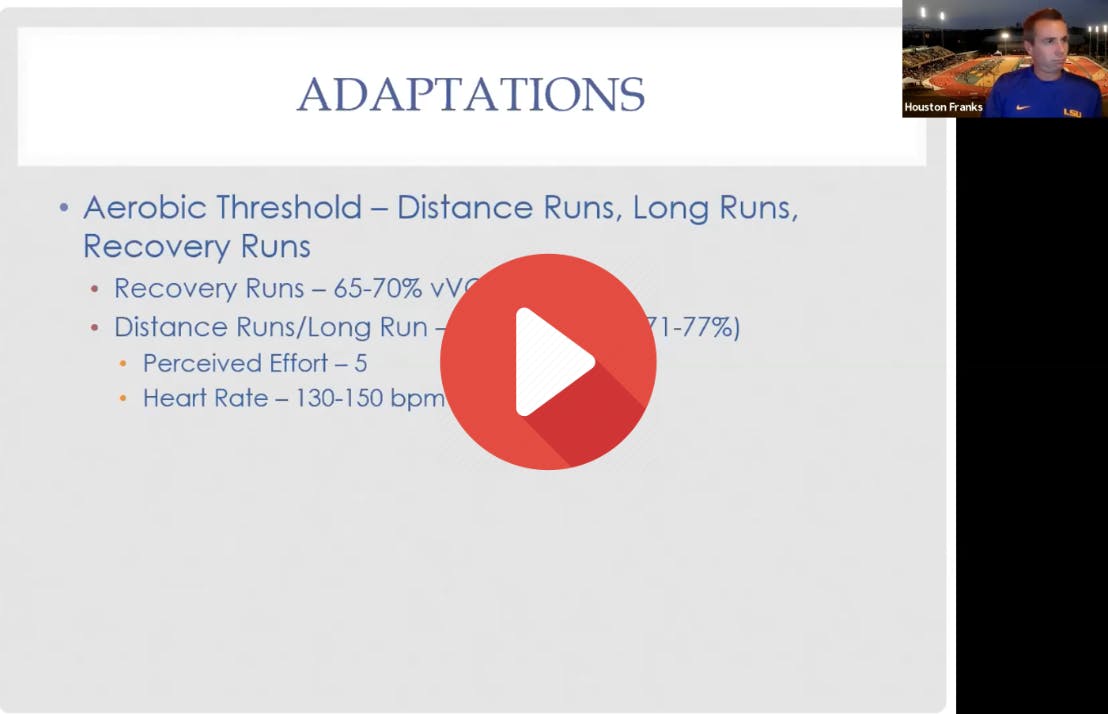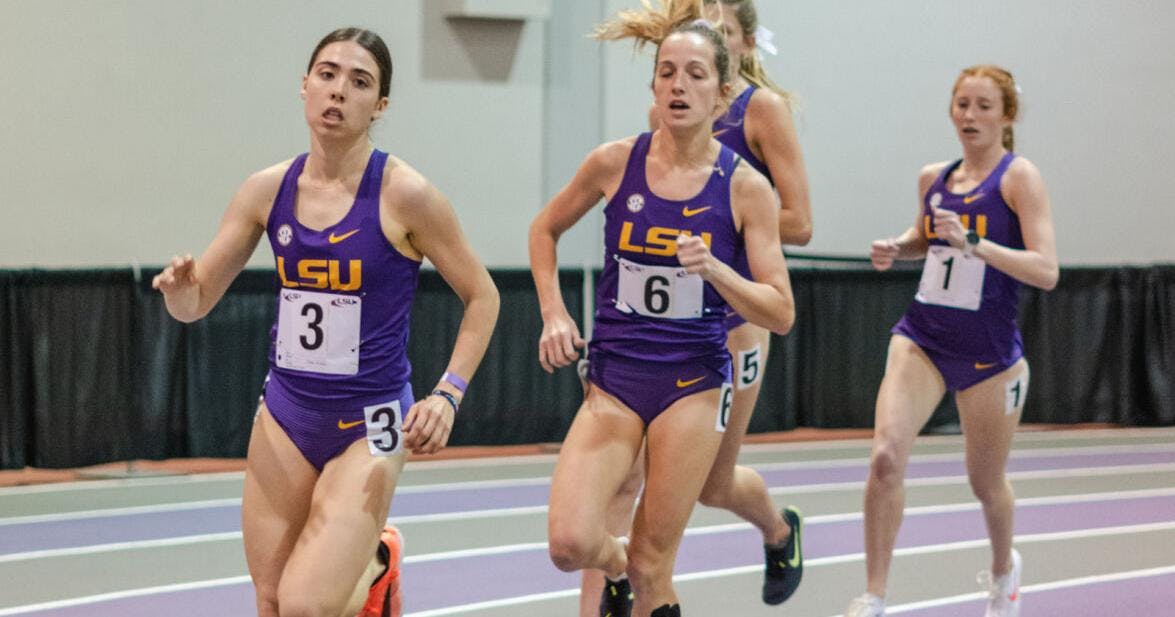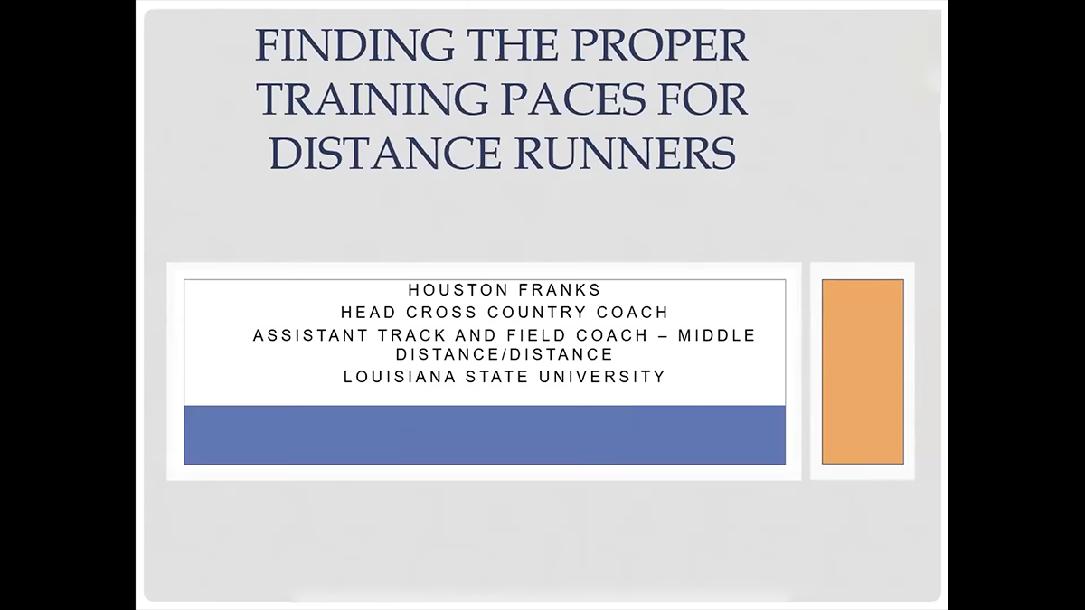- By Grant Young
Training an endurance athlete can be a deceptively hard task for any track and field coach.
The natural instinct when it comes to training any long-distance runner is to, well, have them run. Yet, while running is of course a crucial component to building up a long-distance runner’s endurance, there should be much more that goes into their training regimen because there’s a lot more nuance to being a good distance runner.
Perhaps the most crucial part of success as a long-distance runner is building up stamina and endurance. And the best way to build this without overworking your runners is to establish a challenging yet doable training pace.
Having a training pace is great for a few reasons. It improves a runner’s vVO2 max (the rate at which your heart can pump oxygen to your muscles), conditions a runner’s lungs, increases their top speed when competing, and makes them better equipped for shorter races.
While finding a runner’s ideal training pace can be a difficult task, there are few people in the world better suited to help you do so than Houston Franks.
Coach Franks is currently the assistant coach for LSU track and field’s mid-distance and distance squads, in addition to being the head coach for the cross-country team. And LSU’s distance program has flourished in the past four seasons under Coach Frank’s direction.
The 2023 cross-country season saw Franks and the Lady Tigers tie the program’s highest finish of third at the NCAA South Central Regional. This came a season after leading LSU to the program’s first third-place finish in 2022.
Coach Franks prides himself on the training pace that all of his LSU distance runners prepare for their races at. His ‘How to Find the Proper Training Paces for Endurance Athletes’ course discloses some of his best lessons on how distance coaches at every level can help their runners find the perfect training pace that will not only keep them prepared in a safe, efficient manner but will also have them perfectly equipped to execute at their best when it becomes time to compete.
Test to Get vVO2
The first part of calculating a distance runner’s ideal training pace is figuring out what their vV02 is.
As we mentioned previously, a runner’s vVO2 is the rate at which their heart can pump oxygen to their muscles, and is used to find their maximal aerobic capacity value. While this sounds complicated to decipher, Coach Franks has a relatively simple method of doing so.
Coach Franks believes the two most effective training times/distances for calculating an accurate vVO2 are by doing either a two-mile time trial or a 10-minute running test.
Not only are both of these training exercises excellent for getting an accurate vVO2 reading. But they’re each easy to do for a large group of people. The two-mile time trial is especially easy to do for an entire team at once because the coach can just wait at the end of the two-mile mark and record what each of their runner’s times are.
From there, all the coach needs to do is calculate each runner’s pace per mile. This is why the two-mile run is especially easy, because it’s just each runner’s final time divided by two.
This is how to get each runner’s vVO2. From there, a coach will want to use that number and incorporate it to figure out what the ideal training pace for each runner should be, depending on which race they run.
For a runner who wants to find their ideal training pace for a 10k race, it should be about 92% of their vVO2. 100% of a runner’s vVO2 is a great calculator for about a 3,000m race, while 120-136% of their vVO2 should be used for an 800m runner.
These percentages are going to vary depending on the level you’re coaching. If you’re a high school coach, it might not be reasonable to expect these exact percentages. But because you’ll be using each runner’s specific vVO2, the percentages should more or less give you an accurate estimate of what each runner’s training pace should be.
Aerobic Threshold

Coach Franks notes that a distance runner’s aerobic threshold (a steady-state effort that the runner could maintain for extended periods of time, where their breathing will be light and they will not ever get exhausted) will be at around 65% of their vVO2.
Therefore, a recovery run pace after any demanding workout should be at around 65% at the slowest, but ideally would be closer to 70%.
A longer distance run training pace (that isn’t necessarily about training for a specific competition) should be at around 75% of that aerobic threshold.
If a coach or runner wants to recalibrate whether this is an accurate training pace, one way they can do so is by measuring their heart rate while at their aerobic threshold. If it’s between 130-150 bpm then the runner is in a perfect spot.
Final Thoughts
An interesting thought Coach Franks had near the end of his course was regarding the age-old debate about whether runners should typically be training for a set number of miles or a set duration/time.
Coach Franks believes this is going to differ depending on the athlete, coach, and/or team. But as
long as the runner’s ultimate decision blends a balance of effort,
individualism, and honesty with themselves about where they’re at in
their training journey (whether they’re competing for a specific race or
are in the offseason), whichever method they opt for should be
sufficient for succeeding.




No comments:
Post a Comment